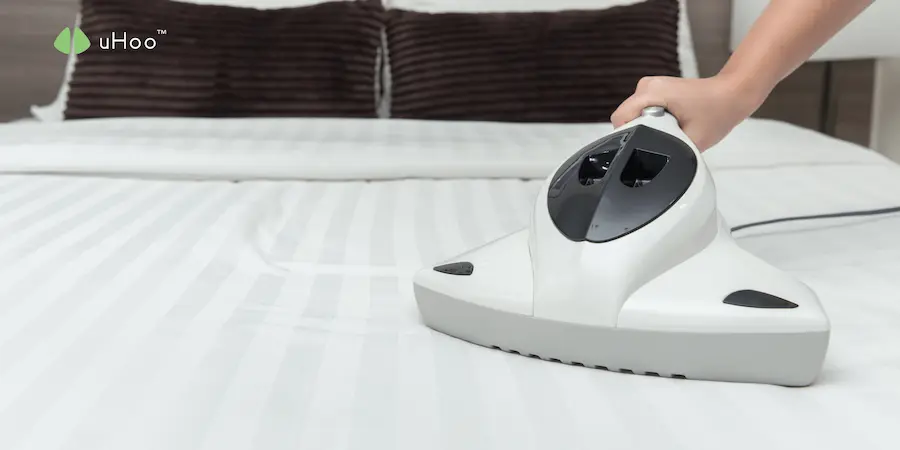Dust mites, pet dander, mold, pollen, and even common household chemicals are silent invaders that can turn your home into an allergy trigger zone. The good news is, achieving a way to live allergy-free indoors is an achievable goal with practical, actionable steps.
Ready to live allergy-free indoors? Here are 7 essential tips to help you transform your home into a haven of clean air and comfort:
1. Master Dust Mite Control: Your Bedding is Key
Dust mites are microscopic arachnids that thrive in warm, humid environments, feasting on shed skin cells. Your bed is their favorite restaurant.
- Encase Everything: To live allergy-free indoors, invest in allergen-proof, zippered covers for your mattresses, box springs, and pillows. These create a physical barrier, trapping mites and preventing new ones from settling.
- Wash Hot & Often: Wash all bedding (sheets, pillowcases, blankets) weekly in hot water (at least 130°F or 54°C) to effectively kill dust mites.
- Reduce Fabric: Minimize upholstered furniture, heavy drapes, and excessive carpets, which all trap dust mites. Opt for washable throw rugs instead.
2. Conquer Pet Dander: Love Your Pet, Not Your Symptoms
Pet dander (tiny flakes of skin, saliva, and urine) is a potent allergen. Even if you don’t own a pet, dander can hitch a ride into your home on visitors’ clothing.
- Establish Pet-Free Zones: Designate at least one room, ideally the bedroom, as a pet-free zone to ensure you have a sanctuary from dander exposure, especially while you sleep.
- Regular Grooming & Washing: Bathe and brush your pets frequently to reduce dander shedding. Wash pet beds regularly in hot water.
- Hand Washing: Always wash your hands thoroughly after petting animals.
3. Evict Mold & Mildew: Eliminate Moisture Sources
Mold thrives in damp, humid conditions, releasing spores that can trigger respiratory allergies and asthma. Preventing moisture is critical to live allergy-free indoors. Learn more through the uHoo Mold Index.
- Control Humidity: Aim for indoor humidity levels between 30-50%. Use a dehumidifier in naturally damp areas like basements, bathrooms, and laundry rooms.
- Fix Leaks Promptly: Repair any leaky pipes, roofs, or foundations immediately. Don’t let water accumulate.
- Ventilate Properly: Use exhaust fans during and after showering or cooking. Ensure good airflow in all rooms.
- Clean Regularly: Clean bathrooms, kitchens, and other mold-prone areas with mold-killing cleaners.
4. Block Outdoor Pollen: Keep Nature’s Irritants Out
Pollen, while essential for plant life, is a significant outdoor allergen that readily finds its way indoors.
- Keep Windows & Doors Closed: Especially during peak pollen seasons. Rely on air conditioning to cool and filter your home’s air and live allergy-free indoors.
- Clean Yourself & Pets: Shower and change clothes after spending significant time outdoors, and wipe down pets that go outside before they come back in.
- Change Clothes: Don’t wear outdoor clothes in your bedroom.
5. Optimize Air Filtration: Your Home’s Invisible Shield
Beyond specific allergen sources, improving your home’s overall air filtration system is a powerful step to live allergy-free indoors.
- Upgrade HVAC Filters: Use high-efficiency pleated filters (MERV 11 or higher) in your heating and cooling system. Change them every 1-3 months, especially during allergy season.
- Invest in a HEPA Vacuum: A vacuum cleaner with a HEPA (High-Efficiency Particulate Air) filter traps tiny allergen particles instead of recirculating them into the air.
- Consider Portable Air Purifiers: Place stand-alone HEPA air purifiers in frequently used rooms, particularly bedrooms, for targeted air cleaning.
6. Clean Smarter, Not Harder: Reduce Chemical Irritants
Many cleaning products contain Volatile Organic Compounds (VOCs) that can irritate airways and trigger allergy-like symptoms.
- Choose Wisely: Opt for natural, unscented, and “green” cleaning products whenever possible. Vinegar and baking soda are excellent, non-toxic alternatives.
- Ventilate When Cleaning: Open windows (if pollen counts are low) or use exhaust fans when cleaning to dissipate fumes.
7. Monitor Your Air Quality: Invest in a uHoo Air Quality Monitor
You can only truly manage what you can measure. An investment in a uHoo air quality monitor provides invaluable insights into your home’s unseen environment. This device gives you real-time data on key factors that impact your allergies, including particulate matter (PM2.5), VOCs, temperature, and crucially, humidity levels.
Knowing your home’s exact humidity helps you fine-tune your dehumidifier use to deter dust mites and mold. It empowers you to identify hidden triggers and confirm the effectiveness of your allergy-proofing efforts, taking the guesswork out of creating a truly healthy living space.
By diligently applying these practical tips and utilizing the power of air quality monitoring, you can make significant strides to live allergy-free indoors. Breathe deeper, sleep better, and enjoy the true comfort of your home.

